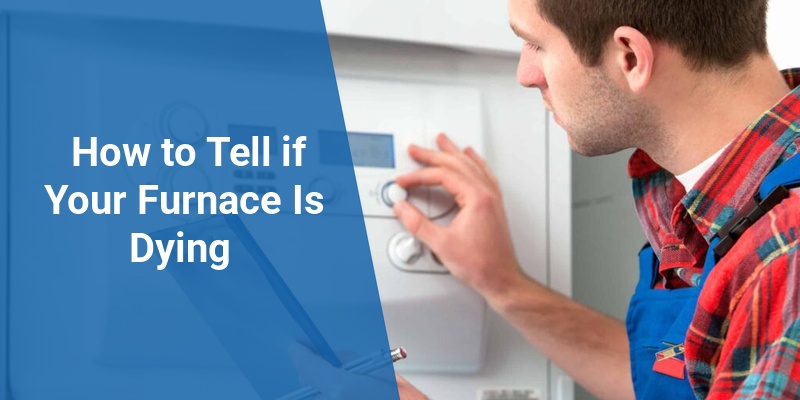Knowing when your furnace is nearing the end of its lifespan is crucial for home comfort and safety. Furnaces play a vital role in keeping homes warm during cold months, and early detection of problems can save money and prevent unexpected breakdowns. This guide outlines key signs that indicate your furnace might be dying, helping homeowners make informed decisions about repair or replacement.
| Common Signs | Explanation | Recommended Action |
|---|---|---|
| Uneven Heating | Rooms heating inconsistently | Inspect ductwork and furnace components |
| Frequent Repairs | Multiple breakdowns in a short period | Consider replacement |
| Rising Energy Bills | Inefficient furnace consumes more energy | Energy audit and possible upgrade |
| Unusual Noises | Grinding or rattling sounds | Professional inspection immediately |
| Yellow Burner Flame | Indicates combustion problems | Service furnace and check for CO leaks |
Understanding Furnace Lifespan and Its Importance
Most furnaces have a lifespan of approximately 15-20 years. Beyond this, the risk of failure increases, and efficiency typically decreases. Knowing your furnace’s age helps set expectations about repairs or replacement. Older systems often lack modern efficiency standards, which can lead to higher energy bills.
Critical Signs Your Furnace Is Failing
Frequent Breakdowns and Repairs
If your furnace requires frequent repairs, it may be a sign it is no longer reliable. Repair costs can accumulate quickly, sometimes surpassing the price of a new unit. Technicians often recommend replacement when repair costs exceed 50% of a new furnace’s cost.
Increased Energy Bills Without Increased Usage
An inefficient or failing furnace struggles to maintain set temperatures, leading to longer running times. This directly impacts your energy consumption, causing higher utility bills. Tracking your home’s heating costs over time can reveal this trend.
Irregular or Uneven Heating in Your Home
Cold spots or inconsistent heating indicate possible airflow or mechanical issues. Malfunctioning furnaces might not distribute heat evenly, which reduces comfort and points to internal problems.
Unusual Noises During Operation
Grinding, banging, rattling, or squealing noises are red flags. They can indicate worn-out belts, motor problems, or loose components. These noises should never be ignored as they often precede furnace failure.
Burner Flame Color Changes to Yellow
Modern furnaces feature a blue flame, which indicates proper combustion. A persistent yellow or flickering flame suggests incomplete combustion, potentially causing carbon monoxide leaks. This is a serious safety hazard requiring immediate professional attention.
Call 888-906-9139 for Free Local HVAC Quotes – No Obligation, Just Savings!
Factors Accelerating Furnace Wear and Tear
- Lack of Regular Maintenance: Neglecting annual tune-ups accelerates component breakdown.
- Dirty Filters and Ducts: Clogged airflow stresses the system, leading to overheating and inefficiency.
- Overuse in Harsh Winters: Continuous high demand can shorten the furnace’s useful life.
- Poor Installation or Parts Quality: Inferior installation or components reduce longevity.
How to Assess Your Furnace’s Health
Professional Inspection
Scheduling annual inspections by certified HVAC technicians is key. They perform diagnostic tests, identify wear, and ensure safe operation.
Self-Monitoring Tips
- Regularly Check Thermostat Performance: Unexpected temperature fluctuations can be a warning sign.
- Listen for Strange Noises: Be aware of any new or unusual sounds.
- Inspect Your Furnace Flame: Visible through the front panel, a blue flame is normal.
- Monitor Your Energy Bills: Sudden spikes without increased use may indicate efficiency loss.
When to Repair and When to Replace Your Furnace
| Condition | Recommended Action |
|---|---|
| Minor Repair Needs, Furnace Younger Than 10 Years | Repair and continue maintenance |
| Multiple Repairs or Furnace Older Than 15 Years | Consider replacement due to decreased efficiency |
| Safety Concerns Such as Carbon Monoxide Leaks | Immediate professional service or replacement |
Improving Furnace Longevity Through Maintenance
Proper care can extend furnace lifespan significantly. Follow these maintenance tips:
- Change Air Filters Quarterly: Prevent dirt build-up and improve airflow.
- Schedule Annual Professional Tune-Ups: Clean burners, check electrical connections, and test safety controls.
- Keep Surrounding Area Clean: Ensure no debris or flammable materials near the furnace.
- Seal and Insulate Ductwork: Improve heat delivery and reduce strain on the furnace.
Benefits of Upgrading to a Modern Furnace
Replacing an old furnace can bring several benefits:
- Increased Energy Efficiency: Modern furnaces use less energy, lowering utility bills.
- Enhanced Safety Features: Newer models provide better carbon monoxide detection and automatic shutoff.
- Improved Comfort: Advanced technology helps maintain consistent temperatures and quiet operation.
- Environmental Impact: Reduced emissions help lower your home’s carbon footprint.
Conclusion
Being aware of the signs your furnace is dying is essential for maintaining home comfort and safety. Frequent repairs, higher energy bills, uneven heating, unusual noises, and changes in flame color are key indicators. Regular maintenance and timely professional inspections increase furnace longevity and efficiency. When repair costs rise or safety risks appear, replacement is the best option to ensure efficient and safe heating. Taking proactive steps can safeguard your home against sudden furnace failures during cold months.
